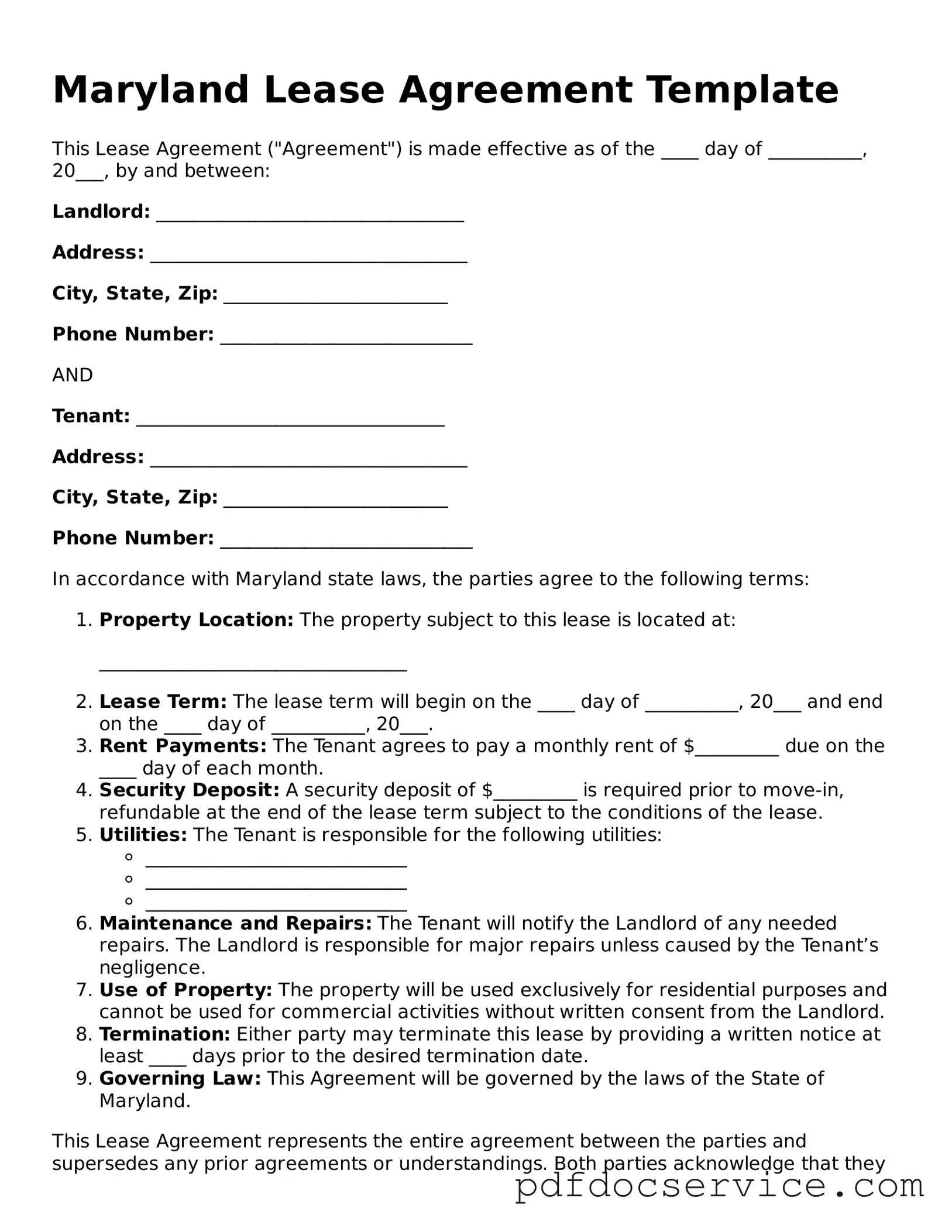Printable Lease Agreement Template for Maryland
A Maryland Lease Agreement form is a legal document that outlines the terms and conditions between a landlord and a tenant for renting a property. This form serves as a vital tool to protect the rights of both parties and ensures clear communication regarding rental expectations. Understanding this agreement is essential for anyone involved in renting or leasing property in Maryland.
Open Lease Agreement Editor
